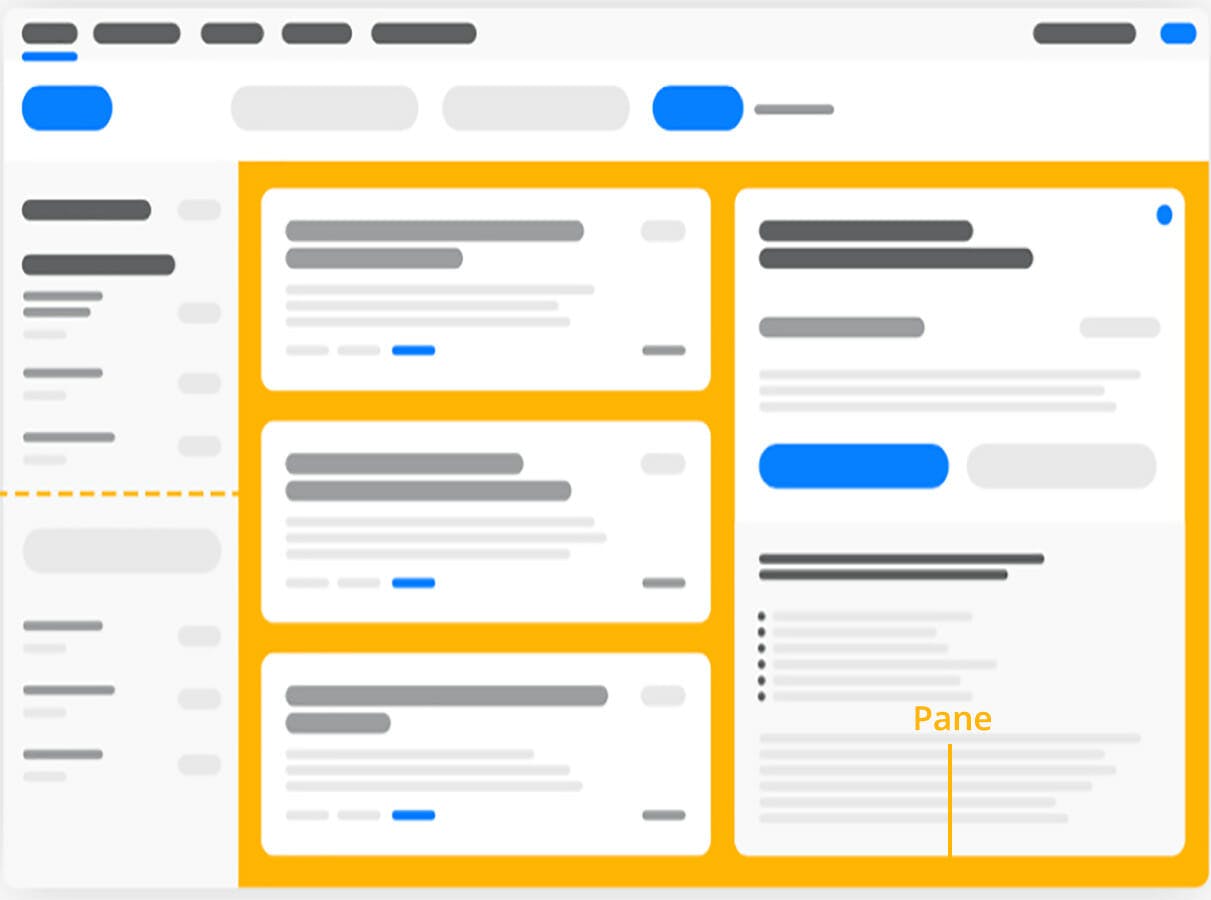Over the last few years, the recruiting funnel has changed based on the economic environment we’re in, as well as the technically competitive environment. From a technical perspective, “pane view” job sites are worth paying attention to.
Our annual benchmark report study uncovered some information about those job sites that is important for employers to understand, especially if dollars are being allocated toward job advertising.
What Is “Pane View?”
Pane View is a job seeker user experience that was a new addition to the interface of many leading job sites in 2018. Previously, to click through individual jobs on a specific site, a candidate would return to the search results page on the job site. The most notable difference with pane view is that the job description is read directly on the job site, rather than on the employer ATS or career site link.
The “click” transaction now means that an employer pays for a view of the job description on the job site … rather than a click off to the ATS or career site. As candidates click through job listings and consider applying, the “click” that advertisers used to pay for delivered the job seeker to the job on the ATS or career site. Now the “click” that advertisers pay for is the view of that job on the job site. Many of those people never click the “apply now” button and never arrive at the ATS or career site. The way that recruitment advertisers and job sites have traditionally defined “clicks” on a CPC model has shifted.
For those who have been around the field for a while, this might not necessarily appear new … rather, “what’s old has now become new again.” For example, if you bought job postings from Monster in the past, it’d host the job description directly on its site similarly to today’s current pane view set-up. Originally, aggregators didn’t adopt the “pane view” model, but now that cost-per-click media buying is the standard, they’ve followed suit.
We’ve been able to monitor conversion metrics from job ads on pane view sites to understand the greater impact on “down funnel” performance. Here’s what’s happening:
- It’s driving more job description views. Pane view makes it easier for a candidate to view job details, so employers (advertisers) are going to get more potential candidates reading their job descriptions. As part of that functionality, they’re going to get charged for more clicks.
- It has greatly simplified navigation for job seekers. Candidates are able to more easily read through and research jobs on one screen (on a desktop computer), making their overall job search experience seamless and more transparent.
- It’s lowering overall job ad conversion rates. With the old click model, 6.5 percent of the clicks advertisers paid for resulted in a completed application. Now, only 3.5 percent of pane view clicks paid for result in an application. When viewing jobs is this easy, advertisers may get more views from window shoppers and fewer people actually applying to those jobs.
- It’s driving higher cost-per-application prices. The effective cost-per-application from pane view publishers has doubled year over year due to lower overall conversion rates. Advertisers working with pane view job sites may now be paying twice the cost to get the same candidate they were receiving a year ago.
There are some winners and losers.
This is great for job seekers. It’s a better, easier user-experience.
This is great for job sites. They are able to provide a better user experience to job seekers, and sell clicks to view jobs directly on their own site. This allows them to retain users on their sites and drive more click activity from the same job seekers. Perhaps it’s the employers who are the losers here. They are now buying clicks for views on their jobs on the job site … rather than the fancy career site or ATS they’ve invested in. The optimized pane view workflow, while a better experience for candidates, does come at a premium in terms of costs.
